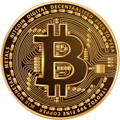




🟠 Bitcoin (BTC): The Original Cryptocurrency Launched: 2009 Creator: Satoshi Nakamoto Max Supply: 21 million BTC Bitcoin is where it all began — the first decentralized digital currency, built to be peer-to-peer money without the need for a central bank or middleman. It runs on a proof-of-work (PoW) system, where miners verify transactions and secure the network. 🔹 Use Case: Digital gold. Many see BTC as a long-term store of value, similar to gold but in digital form. 🔹 Strengths: Security, decentralization, and limited supply. 🔹 Challenges: Scalability (transactions can be slow and costly during network congestion). “Bitcoin is less about buying coffee and more about safeguarding wealth.” 🟣 Ethereum (ETH): The Smart Contract Pioneer Launched: 2015 Creator: Vitalik Buterin & team Current Model: Proof-of-Stake (since the Merge in 2022) While Bitcoin focuses on money, Ethereum opened the doors to programmable money. It introduced smart contracts — self-executing code that lives on the blockchain — powering everything from decentralized finance (DeFi) to NFTs and DAOs. 🔹 Use Case: A decentralized world computer for building dApps (decentralized applications). 🔹 Strengths: Massive developer ecosystem, flexibility, real-world applications. 🔹 Challenges: High gas fees (although Ethereum 2.0 and Layer 2s are improving this). “Ethereum is the backbone of the decentralized internet vision.” ⚪ Litecoin (LTC): The Silver to Bitcoin’s Gold Launched: 2011 Creator: Charlie Lee Max Supply: 84 million LTC Litecoin was designed as a lighter, faster version of Bitcoin. It shares much of BTC’s underlying code but processes transactions more quickly and with lower fees. 🔹 Use Case: Everyday payments and transactions. 🔹 Strengths: Fast block times (2.5 minutes), low fees, widely supported. 🔹 Challenges: Less developer activity and brand power compared to BTC and ETH. “If Bitcoin is gold and Ethereum is oil, then Litecoin is your silver coin — solid, simple, and spendable.”